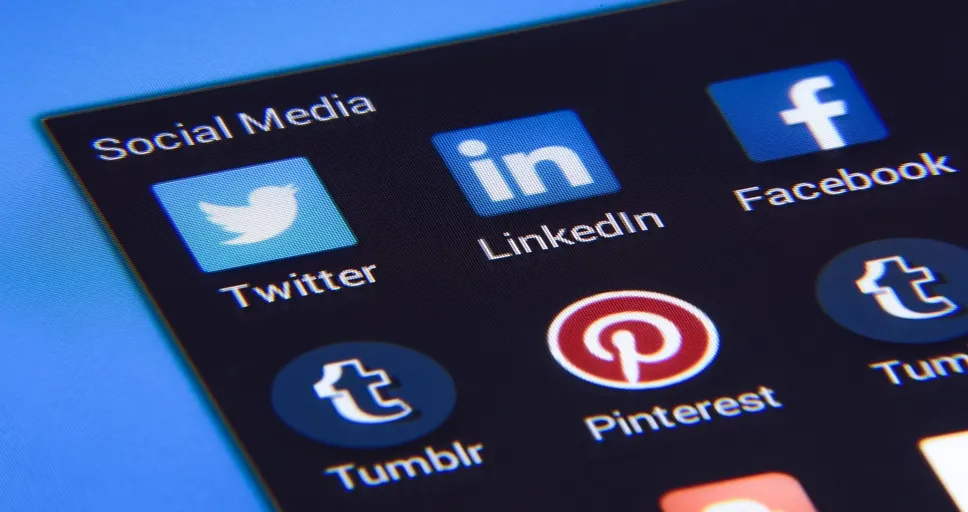Contents
- 1 Understanding Medium Distance Relationships
- 2 Communication Strategies
- 3 Maintaining Intimacy
- 4 Frequently Asked Questions
- 4.1 What is considered a medium distance relationship?
- 4.2 How do you deal with a medium distance relationship?
- 4.3 How far is medium distance?
- 4.4 At what distance is a relationship considered long-distance?
- 4.5 How far is mid distance relationship?
- 4.6 How far counts as a long-distance relationship?
- 4.7 How far is considered a long-distance relationship?
- 4.8 What counts as medium distance?
- 5 Conclusion
- 6 Recommended Authors For Further Reading
Embarking on a medium distance relationship presents a unique set of challenges and opportunities. Unlike their close-proximity counterparts, these relationships strike a delicate balance between too near and too far, necessitating a different approach to communication, trust, and intimacy. This distinct dynamic can often be misunderstood or overlooked, making it crucial to shed light on the nuances that define a medium distance relationship.
The concept of ‘medium distance’ typically applies to couples living far enough apart that spontaneous meet-ups are challenging, yet close enough that regular visits are feasible. This scenario is increasingly common in today’s mobile and connected world, where careers, education, and personal commitments can dictate geographical choices. Understanding this balance is the first step in navigating the complexities and reaping the unique rewards that these relationships offer.
By recognizing the specific challenges and opportunities inherent in a medium distance relationship, couples can tailor their strategies for communication, intimacy, and personal growth. This foundation sets the stage for exploring effective communication strategies, maintaining intimacy, and ultimately, building a strong, resilient partnership.
- Understand the Balance: Recognize the unique challenges and opportunities of a medium distance relationship, where spontaneous meet-ups are rare but regular visits are possible.
- Maintain Communication: Establish regular communication routines using various methods (calls, video chats, messaging) and be fully present during interactions.
- Share Experiences: Engage in shared activities like watching movies online together or starting a book club to feel closer.
- Manage Expectations: Balance individual lives with relationship commitments, plan visits, and maintain transparency to ensure neither partner feels neglected.
- Build Trust: Address issues openly, practice patience, and ensure mutual understanding and reassurance to foster a secure and trusting bond.
- Embrace Growth: Use the distance to foster personal growth and independence while strengthening the relationship.
Understanding Medium Distance Relationships
A medium distance relationship (MDR) occupies a unique niche in the spectrum of romantic partnerships. Unlike long-distance relationships, where partners are often separated by vast geographical spans, or traditional relationships where couples live in close proximity, a medium distance relationship typically involves living far enough apart that daily interaction is not possible, yet close enough that regular visits are manageable. This unique scenario presents both distinctive challenges and unexpected opportunities for growth and bonding.
The primary characteristic that defines a medium distance relationship is the geographical distance that necessitates significant travel but is not insurmountable. This might mean living a few hours apart by car or a short flight away. The distance is enough to prevent couples from seeing each other every day but close enough to allow for weekend trips or spontaneous visits when schedules align.
One of the main challenges in a medium distance relationship is managing the middle ground between constant presence and long-term absence. Partners must navigate the balance between maintaining their individual lives and ensuring the relationship remains a priority. This balance requires careful planning and communication to ensure that neither partner feels neglected or overly burdened by the distance.
However, a medium distance relationship also offers unique opportunities. For example, the distance can encourage partners to value the time they do spend together, leading to more meaningful and focused interactions. It can also promote personal growth and independence, as individuals have the space to pursue their interests and responsibilities while still being committed to a partnership.
Communication, as in any relationship, is key. In a medium distance relationship, it becomes even more critical, as partners need to find effective ways to share their lives, feelings, and experiences without the benefit of regular physical presence. This can involve a mix of modern technology—such as video calls, messaging apps, and social media—alongside traditional methods like letters and surprise gifts to keep the connection alive and strong.
Moreover, trust and security in the relationship are fundamental. The physical distance can often lead to insecurities or misunderstandings if not managed properly. Couples in a medium distance relationship must work diligently to maintain transparency, express their needs and concerns openly, and provide reassurance to each other to foster a secure and trusting bond.
In conclusion, understanding the dynamics of a medium distance relationship is crucial for navigating its challenges successfully. By acknowledging the unique aspects of their situation, couples can devise strategies that strengthen their bond despite the physical distance. Embracing the individual growth, maintaining open lines of communication, and cherishing the time spent together can transform the challenges of a medium distance relationship into opportunities for building a deeper, more resilient partnership.
Communication Strategies
Effective communication stands as the cornerstone of any thriving medium distance relationship. While distance can complicate daily interactions, developing robust communication strategies can significantly mitigate these challenges, fostering a deeper connection between partners.
1. Establish Regular Communication Routines
Consistency is key in a medium distance relationship. Setting regular times for phone calls, video chats, or messaging can create a sense of normalcy and anticipation. It’s important to find a balance that works for both partners; too much communication can be overwhelming, while too little can lead to feelings of neglect. The goal is to maintain an open line of communication that fits comfortably into each other’s daily lives.
2. Utilize Various Communication Methods
Leveraging different forms of communication can keep the relationship dynamic and engaging. Beyond traditional phone calls, partners can use video calls to share visual experiences, messaging apps for quick updates, and emails or letters for more thoughtful and detailed expressions. This variety ensures that communication remains fresh and adapts to different needs and situations.
3. Be Present and Attentive
When communicating, it’s vital to be fully present and attentive, despite the physical distance. This means actively listening, responding thoughtfully, and avoiding distractions during conversations. Showing genuine interest in each other’s daily lives can help bridge the gap caused by distance and reinforce the feeling of being connected.
4. Share Experiences
Sharing experiences can help partners feel closer despite being in a medium distance relationship. Watching a movie together while on a video call, starting a book club of two, or playing online games can create shared experiences and memories. Additionally, planning visits and counting down together can build excitement and strengthen the bond.
5. Address Issues Openly and Promptly
Misunderstandings and conflicts are inevitable in any relationship, and they can be exacerbated by distance. It’s crucial to address issues openly, honestly, and promptly rather than allowing them to fester. Effective conflict resolution involves expressing feelings and concerns without blame, listening to each other’s perspectives, and working together to find a mutually satisfactory solution.
6. Practice Patience and Understanding
Patience and understanding are particularly important in a medium distance relationship. There will be times when schedules don’t align perfectly or when the distance feels particularly challenging. Being patient and empathetic towards each other’s circumstances can help maintain a supportive and loving relationship.
7. Celebrate Successes and Support Each Other
Finally, it’s important to celebrate successes and support each other through challenges. Acknowledging accomplishments, providing encouragement during difficult times, and reminding each other of the relationship’s value can boost morale and reinforce the partnership.
Implementing these communication strategies can significantly improve the quality of a medium distance relationship. By establishing regular communication routines, utilizing various methods, and addressing challenges with openness and understanding, couples can overcome the obstacles posed by distance and maintain a strong, healthy relationship.
Maintaining Intimacy

Intimacy is a crucial element in any relationship, but in a medium distance relationship, maintaining it requires extra effort and creativity. The physical separation can make it challenging to feel emotionally connected, but with the right approaches, couples can sustain and even deepen their intimacy.
1. Share Personal Thoughts and Feelings
Openly sharing thoughts, feelings, and daily experiences can significantly enhance emotional intimacy. It’s about letting your partner into your world, even if they are miles away. Discussing both the mundane details and the deeper aspects of your day can create a sense of closeness and shared life.
2. Prioritize Quality Communication
While frequent communication is important, the quality of the interactions is even more crucial in maintaining intimacy in a medium distance relationship. Focus on having meaningful conversations where both partners feel heard and understood. This can involve sharing hopes, dreams, fears, and everything in between.
3. Find Creative Ways to Be Together
Leverage technology to create shared experiences. Watch a movie together online, cook the same meal while video chatting, or start a hobby simultaneously. These activities can help bridge the gap and create a sense of togetherness.
4. Plan Regular Visits
Physical visits are essential in a medium distance relationship. They reinforce the physical and emotional connection and provide something to look forward to. Try to plan regular visits and make the most of the time together by creating special memories.
5. Keep the Romance Alive
Romance doesn’t have to fade just because of distance. Send surprise gifts, love letters, or even a care package. Small gestures can make a big difference in maintaining the romantic spark and showing your partner that they are constantly in your thoughts.
6. Utilize Technology for Intimacy
Technology can be a powerful tool in sustaining intimacy. Beyond regular text messaging or calls, consider using video chats for more personal interaction. Apps that allow for sharing photos, videos, or even heartbeat sounds can also add a unique personal touch to your communication.
7. Work on Personal Development
Working on personal growth individually can also contribute to the intimacy of the relationship. Share your personal goals, achievements, and self-discoveries with your partner. Supporting each other’s growth can lead to a deeper understanding and connection.
8. Manage Expectations
It’s important to manage expectations and be realistic about what is achievable in a medium distance relationship. Understanding and accepting the limitations while appreciating the unique aspects of your connection can help maintain a healthy level of intimacy.
Maintaining intimacy in a medium distance relationship requires effort, patience, and creativity. By implementing these strategies, couples can navigate the challenges of distance and sustain a deep, meaningful connection. Engaging in open communication, creating shared experiences, and prioritizing the emotional bond can bridge the physical gap and strengthen the relationship.
- Medium distance relationships (MDRs) offer unique challenges and opportunities, requiring a balance between individuality and partnership.
- Regular, varied communication and maintaining intimacy are crucial for overcoming the geographical gap.
- Effective MDRs depend on trust, transparency, and mutual effort to keep the bond strong.
- Shared experiences and consistent communication routines can enhance connection and understanding.
- Addressing issues promptly and practicing patience and empathy are essential for navigating MDRs successfully.
Frequently Asked Questions
What is considered a medium distance relationship?
A medium distance relationship is typically considered to be one where partners live between 30 to 200 miles apart, making regular, but not daily, in-person visits feasible.
How do you deal with a medium distance relationship?
Dealing with a medium distance relationship involves regular communication, planning frequent visits, and maintaining shared interests and activities to strengthen the bond.
How far is medium distance?
Medium distance is generally defined as being between 30 to 200 miles apart.
At what distance is a relationship considered long-distance?
A relationship is typically considered long-distance when the partners live more than 200 miles apart from each other.
How far is mid distance relationship?
A mid-distance relationship falls in the range of 30 to 200 miles apart.
How far counts as a long-distance relationship?
Any relationship where partners live more than 200 miles apart from each other is usually counted as a long-distance relationship.
How far is considered a long-distance relationship?
A long-distance relationship is considered when the distance between partners exceeds 200 miles.
What counts as medium distance?
Medium distance refers to partners living between 30 to 200 miles apart from each other.
Conclusion

Navigating a medium distance relationship presents a unique set of challenges that require dedication, trust, and communication. While the distance may create physical separation, it doesn’t have to signify emotional distance. By understanding the dynamics specific to medium distance relationships, couples can develop strategies to maintain a strong and healthy connection.
Effective communication is the lifeline of any relationship, especially when distance is involved. Establishing regular, quality communication routines can help bridge the physical gap, allowing both partners to feel connected and involved in each other’s lives. Leveraging different communication platforms and being creative in sharing experiences can further enhance this connection.
Intimacy is another critical aspect that can be maintained with effort and imagination. Beyond physical intimacy, focusing on emotional closeness—by sharing thoughts, feelings, and daily happenings—can strengthen the bond. Regular visits, when possible, reinforce this connection, making the relationship more resilient.
In a medium distance relationship, it is crucial to balance independence with interdependence. While the distance allows for personal growth and independence, the commitment to the relationship underscores the mutual support and shared goals. This balance can lead to a stronger, more fulfilling relationship.
Lastly, it is important to remain positive and view the distance as an opportunity to strengthen the relationship rather than a barrier. Every relationship faces challenges, and a medium distance relationship is no different. With patience, understanding, and effort, couples can overcome these challenges and build a lasting bond.
In conclusion, a medium distance relationship may require more planning, effort, and communication compared to traditional relationships. However, with the right strategies and mindset, it can be just as rewarding and fulfilling. By embracing the unique aspects of their situation, couples can navigate the challenges and enjoy a loving, strong, and enduring relationship.
Recommended Authors For Further Reading
- John Gottman – Gottman is a psychological researcher and clinician known for his work on marital stability and relationship analysis. His insights can be invaluable for understanding and navigating the dynamics of medium-distance relationships.
- Gary Chapman – Chapman, an author, speaker, and counselor, is famous for his concept of the “Five Love Languages,” which can offer helpful frameworks for communicating and maintaining intimacy in medium-distance relationships.
- Esther Perel – Perel is a therapist and author who explores modern relationships and intimacy. Her work can provide profound insights into maintaining passion and understanding in medium-distance relationships.
- Harville Hendrix – Hendrix, a clinical pastoral counselor and author, has developed methods for couples’ therapy that can be particularly relevant for those navigating the specific challenges of medium-distance relationships.
- Brené Brown – Brown’s research on vulnerability, courage, and empathy offers deep insights into how to maintain a strong, emotionally connected relationship despite physical distance, which can be especially pertinent for medium-distance relationships.


